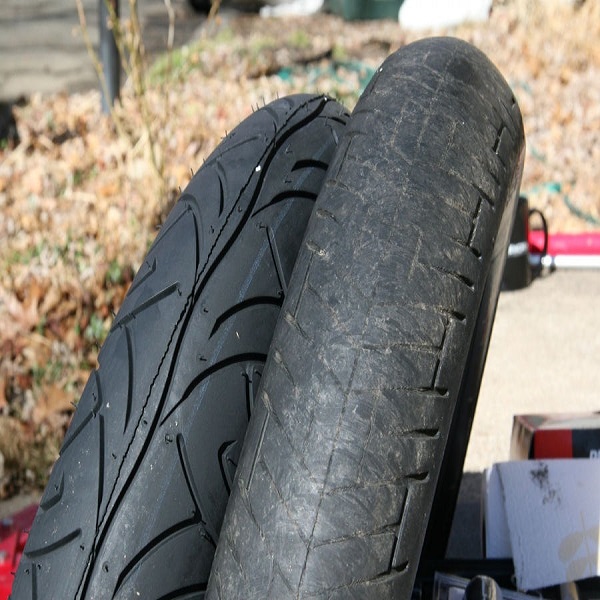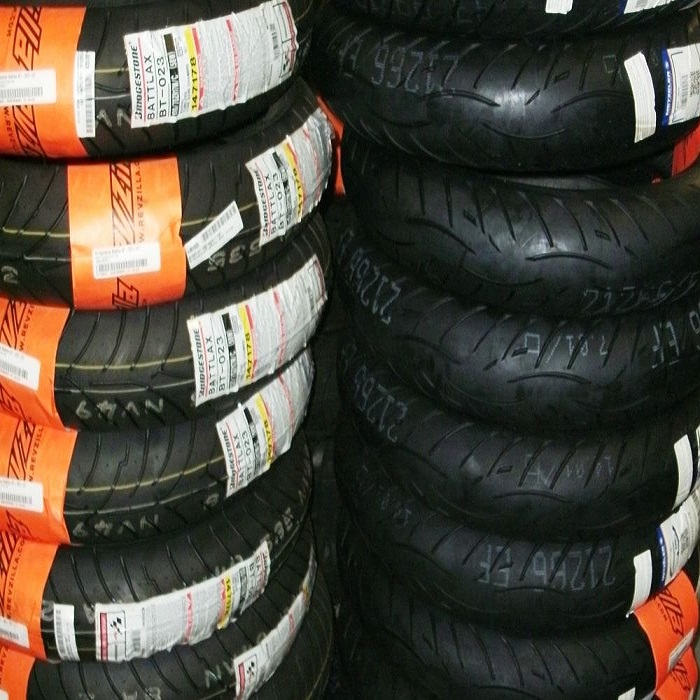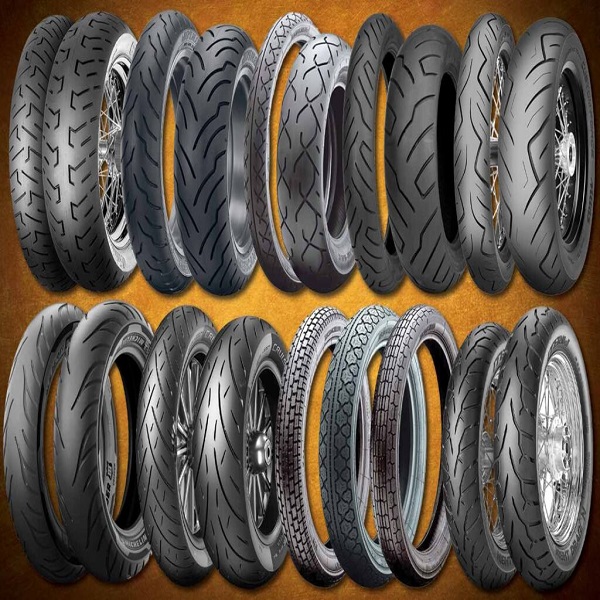History and Evolution of Motorcycle Tires
The journey of motorcycle tires has been long and transformative, from basic beginnings to today’s advanced technology. It all began in the early 1900s, with tires that were simple and devoid of tread patterns. These early tires were often made from natural rubber, which provided limited grip and durability. As motorcycles evolved into faster and more complex machines, tire technology had to keep pace.
The 1930s marked a significant milestone with the introduction of bias tires. This construction featured layers of fabric with cords laid at alternating angles, offering improved strength. These tires became the standard for several decades, until the 1980s when radial tires made their entrance into the motorcycle world. Their arrival brought a monumental shift.
Radial tires, with their steel belt construction, offered a leap in performance. They provided better grip, longer life, and improved high-speed stability. The development didn’t stop there. Advances in materials led to the introduction of synthetic rubbers and more sophisticated tread patterns. This allowed for tires that could perform in various weather conditions and cater to different riding styles.
Innovation has been constant, with tire manufacturers experimenting with rubber compounds and construction techniques to enhance the riding experience. The advancements in tire technology have played a crucial role in the evolution of motorcycle safety and performance. Through each phase, the quest for the perfect tire has seen the motorcycle community transition from bias to radial tires, as riders seek out the benefits that suit their specific needs.
 Understanding Bias Tires: Construction and Benefits
Understanding Bias Tires: Construction and Benefits
Bias tires, a traditional tire design, are known for their distinct construction. These tires are made with layers of fabric, such as nylon or polyester, with cords at alternating angles, typically ranging from 30 to 40 degrees relative to the direction of travel. This crisscross pattern provides a robust internal structure.
Robust and Strong Build
The diagonal cord pattern gives bias tires exceptional strength against the lateral forces encountered on turns. This construction ensures they maintain their shape and offer consistent performance even on rough roads.
Cost-Effective and Durable
Bias tires tend to be more affordable compared to radial tires. They are often praised for their longevity, especially when used in applications that require carrying heavier loads or riding on less-than-perfect road surfaces.
Smooth Ride and Load Support
Riders will appreciate the comfortable ride bias tires provide, thanks to their more flexible sidewalls which absorb road imperfections effectively. They support heavy loads well, making them an ideal choice for touring motorcycles that often carry additional gear or a passenger.
In conclusion, bias tires are built for durability and provide a smooth riding experience, along with better load-carrying capacity at a more economical price point. Riders should consider bias tires for a combination of traditional construction and functional benefits.
Understanding Radial Tires: Design and Advantages
Radial tires represent a modern approach in motorcycle tire design. At their core, they feature steel belts that run across the tread at a 90-degree angle to the direction of travel. This unique construction offers distinct benefits over their bias counterparts.
Enhanced Grip and Stability
The steel belt construction of radial tires contributes to a larger footprint on the road. This results in better grip and improved stability, especially at high speeds. It’s a key advantage for riders who prioritize performance.
Longer Tread Life
Radial tires also tend to have a longer tread life. Their tread pattern is designed to wear down evenly, making them last longer than bias tires. This can be a cost-saving feature in the long run.
Better Heat Dissipation
Thanks to their construction, radial tires dissipate heat more efficiently. This is crucial during extended rides at high speeds, as it reduces the risk of tire failure and extends the tire’s overall lifespan.
Improved Comfort
Despite having a firmer tread area, radial tires are designed with flexible sidewalls. This flexibility helps absorb road shocks, offering a smoother ride compared to the stiffer sidewalls of bias tires.
Varying Weather Performance
Radial tires can be engineered with advanced rubber compounds. These compounds, along with sophisticated tread designs, allow radial tires to adapt to different weather conditions. Riders can enjoy safe and reliable performance whether it’s dry or wet.
In summary, radial tires offer advantages in grip, stability, longevity, comfort, and adaptability to weather variations. This makes them a compelling choice for many modern riders looking for enhanced motorcycle performance.
Comparative Analysis: Bias vs Radial Tires in Performance
When choosing between bias and radial motorcycle tires, it’s crucial to compare their performance on the road. Both types of tires have unique characteristics that directly affect how a motorcycle handles and responds under various conditions.
Grip and Traction
Radial tires stand out with their exceptional grip. Their footprint on the road is larger due to the steel belt design. This gives riders better traction, which is vital for safety and handling. In contrast, bias tires have a smaller contact area, offering less grip.
Handling and Maneuverability
Radial tires also excel in handling. The flexible sidewalls help in making quick turns with ease. Bias tires may feel more stable at lower speeds due to their robust construction, but they can’t match the maneuverability of radials at higher speeds.
Stability and Comfort
For high-speed stability, radials are the clear winner. They maintain their shape better, reducing wobbles and vibrations. Bias tires offer a smoother ride on rough roads because of the cushioning effect from their flexible sidewalls.
Load-Bearing Capacity
Bias tires are better suited for heavy loads. Their strong internal structure can handle the extra weight of gear and passengers. Radial tires, while robust, may not be the best choice for heavily loaded touring bikes.
Durability and Wear
In terms of durability, bias tires typically last longer due to their rugged build. Radial tires, however, have a longer tread life. This means while the body of bias tires may endure, radials will have better long-term performance because their tread wears down more evenly.
In summary, when considering bias vs radial motorcycle tires in performance, radials offer superior grip, high-speed stability, and maneuverability, but bias tires excel in load-bearing and durability on uneven roads. This comparison can help riders make informed decisions based on the specific demands of their riding style and the conditions they face.
Considerations for Choosing Between Bias and Radial Tires
When faced with the decision of selecting bias or radial motorcycle tires, several factors come into play. It is essential to weigh these considerations thoughtfully to make the most suitable choice for your motorcycle and riding preferences.
Riding Style and Performance Needs
If you’re someone who enjoys high-speed rides and demands agile handling, radial tires are a fitting choice. With enhanced grip and stability, they suit a sportier riding style. Bias tires, on the other hand, are more apt for relaxed cruisers or heavy touring motorcycles thanks to their durability and load capacity.
Road Conditions and Terrain
Consider the typical roads you ride on. Bias tires can absorb bumps and offer comfort on uneven or rough terrain. However, if you frequently ride on well-maintained roads or highways, the superior traction and stability of radial tires may benefit you more.
Load and Weight Considerations
Riders who travel with a lot of gear or a passenger should think about the load-bearing capacity of their tires. Bias tires are adept at handling heavy loads, while radial tires may perform less optimally under the same conditions.
Longevity and Cost-Effectiveness
Assess how tire wear and replacement costs factor into your decision. Bias tires generally have a longer lifespan, making them a cost-effective option if you want to avoid frequent tire changes. Radial tires might have a higher upfront cost but could provide savings in the long run due to their longer tread life.
Climate and Weather Conditions
If you ride in varying weather conditions, consider the capability of radial tires to be tailored with compounds and tread designs for different climates. Bias tires, however, may not offer as much adaptability.
By weighing these considerations against your specific needs, you’ll be able to choose the right type of tire that offers the best combination of performance, comfort, and safety for your motorcycle.
Impact of Tire Choice on Motorcycle Handling and Safety
Selecting the ideal motorcycle tire affects both handling and safety in pivotal ways. The type of tire influences grip, ride comfort, and the overall stability of the motorcycle. Here’s how both bias and radial motorcycle tires can directly impact motorcycle dynamics.
Grip on Various Surfaces
The choice between bias vs radial motorcycle tires can alter grip levels considerably. Radial tires, known for an expansive footprint, enhance traction, particularly on wet and smooth surfaces. This improved contact with the road diminishes the likelihood of skidding. Bias tires may offer sufficient grip for casual riding but may fall short in aggressive or adverse conditions.
High-Speed Performance
Radial tires are designed for high-speed riding, offering greater stability due to their rigid construction. They facilitate responsive handling, reducing the risk of high-speed wobbles. Bias tires may present more challenges at higher speeds, as they are not specifically engineered for such performance.
Load Distribution
When it comes to carrying loads, the robust nature of bias tires makes them reliable for weightier cargo. They can influence the bike’s handling by stabilizing it under heavier loads. Radial tires, while not as strong in load-bearing, provide better handling due to their sidewall flexibility.
Comfort and Fatigue
Riders will find that tires greatly affect comfort, which in turn influences fatigue levels during long rides. Radial tires, with their flexible sidewalls, offer a cushier ride, reducing rider fatigue. Bias tires, though less forgiving on rough terrain, also provide a level of comfort due to their overall sturdiness.
Safety Across Different Terrains
Safety is paramount and tire choice is a decisive factor. Bias tires are preferred for their reliability on uneven roads where toughness is needed. Radial tires, offering superior grip and heat dissipation, present a safer option for high-speed touring on highways and racetracks.
Choosing the right tire requires careful consideration of the riding environment and personal style. Riders must prioritize their safety and handling needs to find the most suitable tire, whether it be bias or radial. This decision can be critical to the enjoyment and safety of their ride.
Maintenance Tips for Bias and Radial Motorcycle Tires
To keep your motorcycle running safely and smoothly, proper tire maintenance is crucial. Whether you ride on bias or radial motorcycle tires, there are some key tips to follow.
Regular Inspection
Check your tires often for signs of wear, damage, or foreign objects. Look for cracks, cuts, or bulges that could lead to tire failure.
Correct Tire Pressure
Maintain the right tire pressure. Check it when tires are cold for accurate readings. This prevents excessive wear and improves fuel efficiency.
Tread Depth Check
Monitor tread depth. Once it approaches the minimum legal limit, it’s time to replace the tires. Adequate tread is vital for safe traction.
Balancing and Alignment
Have your wheels balanced and aligned by a professional regularly. It helps in even tire wear and enhances handling.
Cleaning Tires
Keep tires clean. Remove debris and dirt that can cause damage over time. Use mild soap and water for cleaning.
Storage Tips
Store your motorcycle in a cool, dry place to avoid tire degradation. If storing long-term, raise the bike to prevent flat spots on tires.
Professional Checks
Schedule professional inspections. Experts can spot issues you might miss and advise on the best maintenance practices for specific tire types.
Knowing When to Replace
Be aware of your tire’s lifespan. Bias tires may last longer overall, but radial tires often have better tread life. Replace when performance drops.
By following these tips, you can extend the life of your bias or radial motorcycle tires and enjoy a safer, more reliable ride.
 Expert Recommendations and Popular Choices in Motorcycle Tires
Expert Recommendations and Popular Choices in Motorcycle Tires
When it comes to outfitting your motorcycle with the best tires, expert advice is invaluable. Riding habits, bike type, and personal preferences all play a role. Here are some recommendations and popular tire choices among motorcycle enthusiasts.
Evaluating Rider Needs
Start by assessing your riding style. For sports enthusiasts seeking agility, experts often suggest radial tires. Their grip and stability handle high speeds well. Those riding heavy cruisers or tourers might favor bias tires. Their durability works well for long distances with extra weight.
Matching Tires to Motorcycle Types
Next, match your tire choice to your motorcycle type. Sportbikes typically pair with high-performance radials. Touring motorcycles often use bias tires for their load-bearing strength. Off-road bikes might need a specific type of tire entirely, designed for rugged terrain.
Popular Tire Brands and Models
Certain tire brands have earned trust for quality and performance. Michelin, Bridgestone, and Pirelli are some top brands. Popular tire models differ by intended use. The Michelin Pilot Road 4, for instance, is favored for wet grip and longevity. The Bridgestone Battlax is well-known among sport riders for its precision.
Considering Weather and Climate
If you ride in varied weather, look for tires with versatile performance. Radial tires with specialized compounds cater to different conditions. Ensure the tires you choose can handle the climate you ride in most often.
Seeking Professional Insight
Lastly, seek a professional’s opinion. Tire specialists and seasoned riders can provide insights into the latest tire technology. They can also advise on the best tire for your unique riding conditions and bike.
By considering expert recommendations and popular choices, you can make an informed decision on bias vs radial motorcycle tires. Remember to evaluate your needs against the tire’s capabilities to ensure a safe and gratifying riding experience.

Leave a Reply